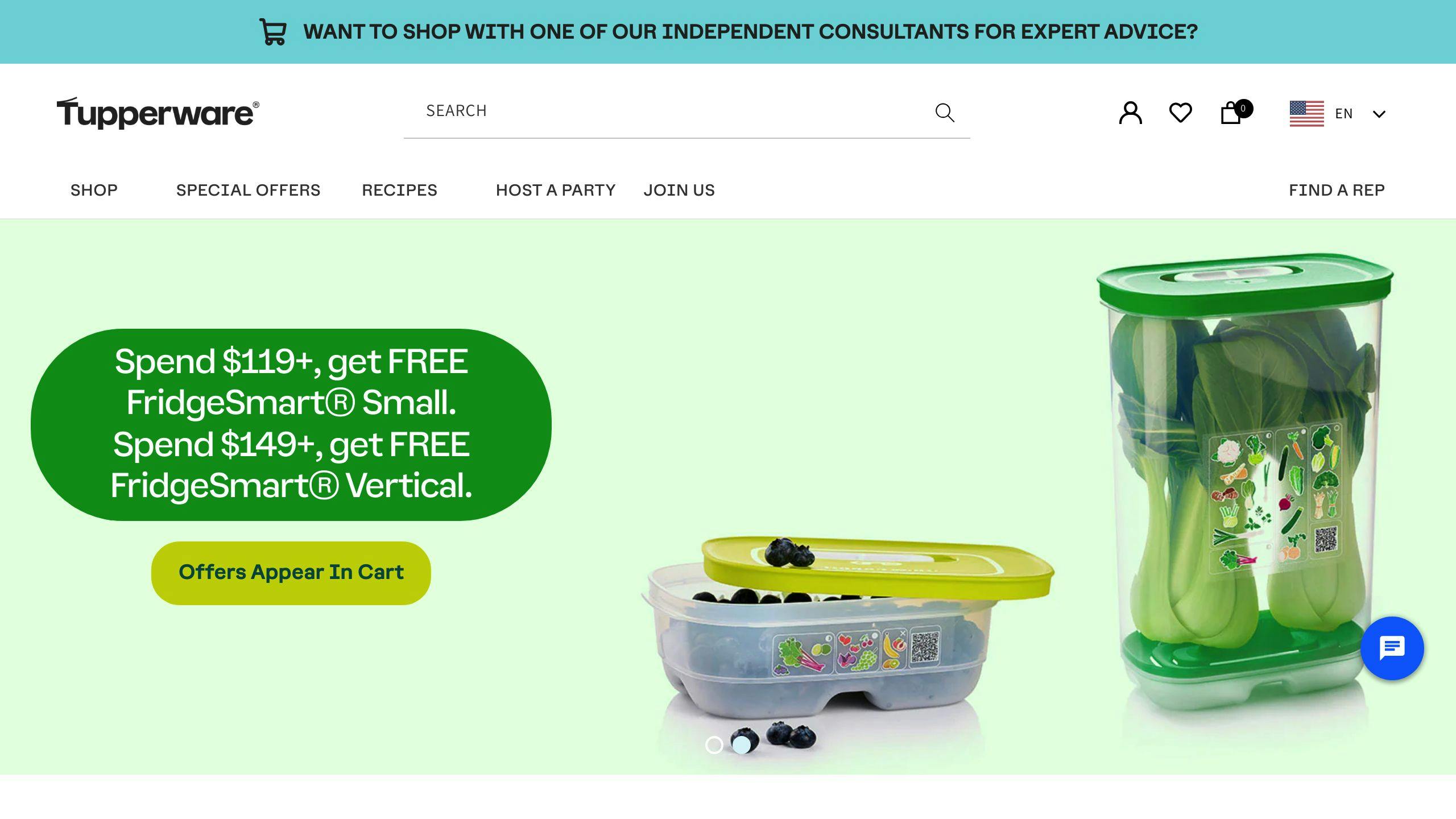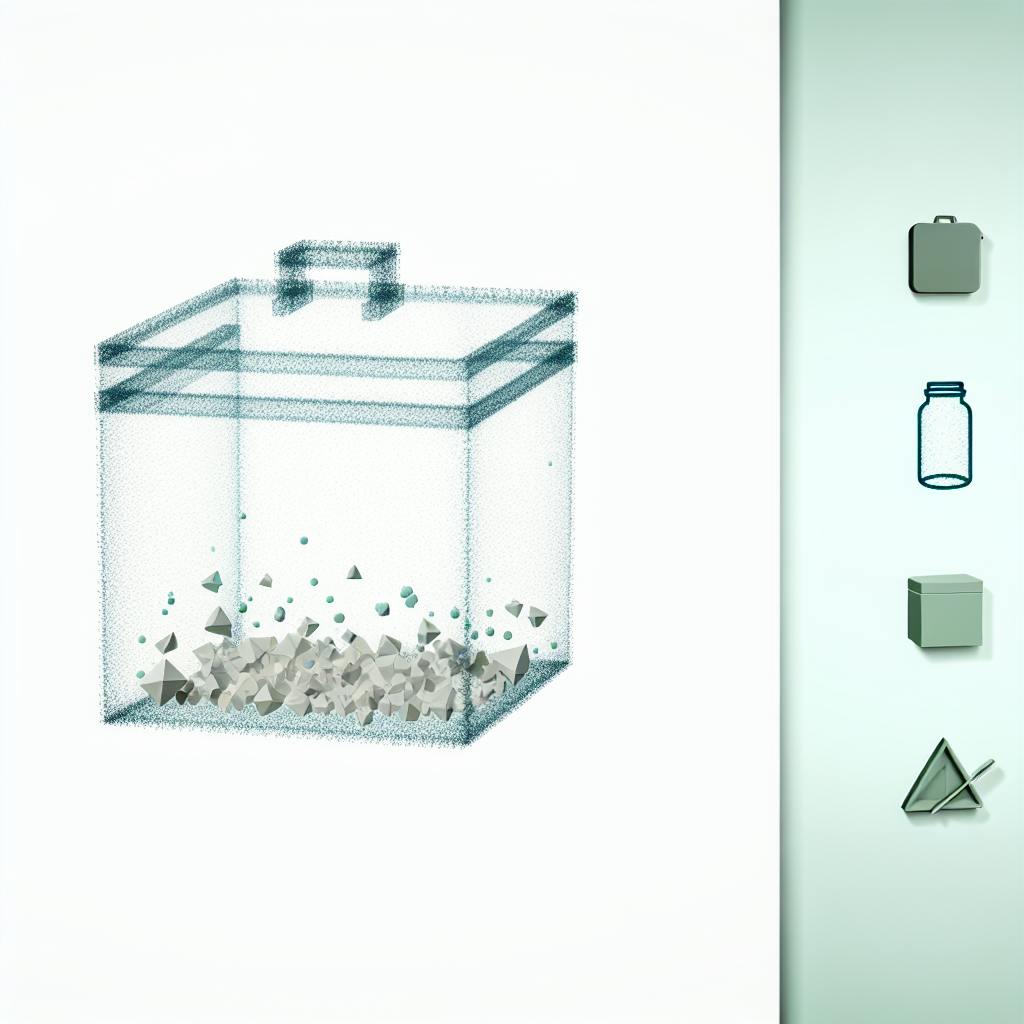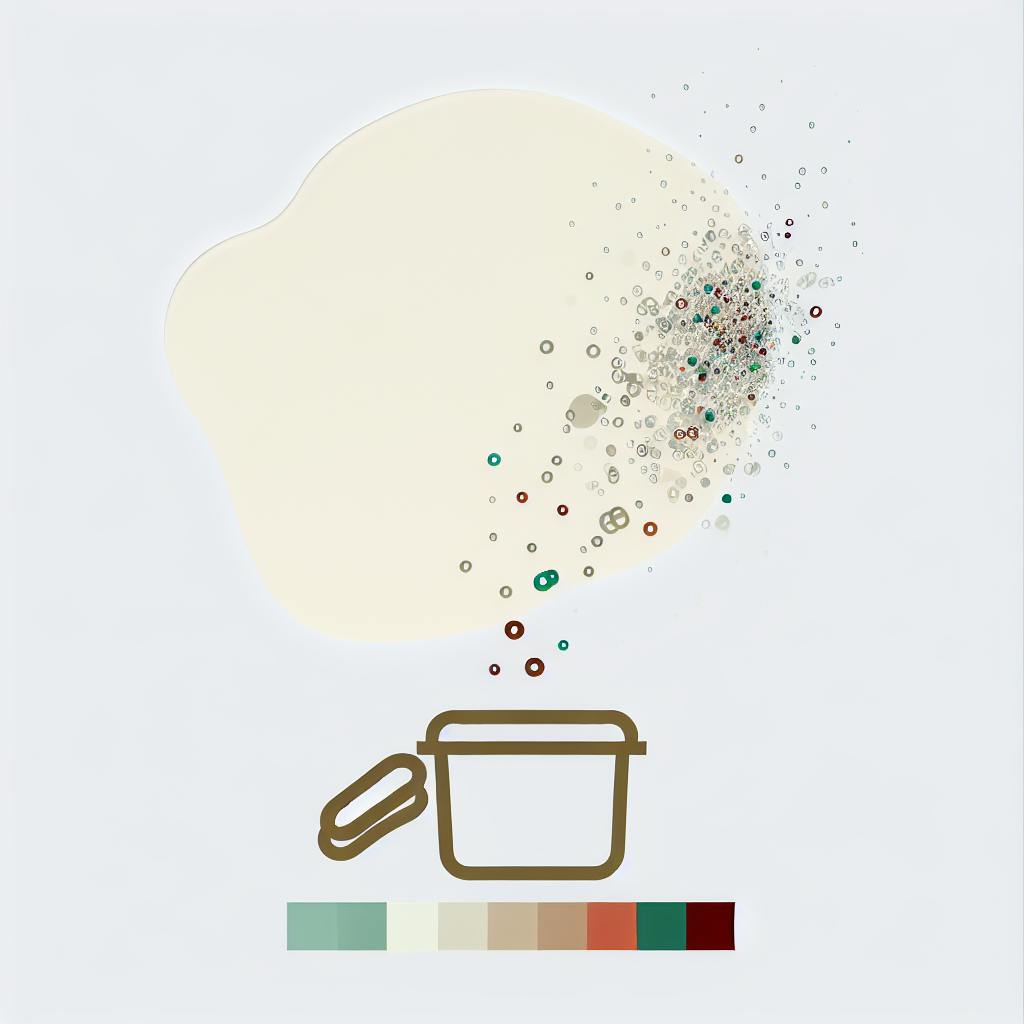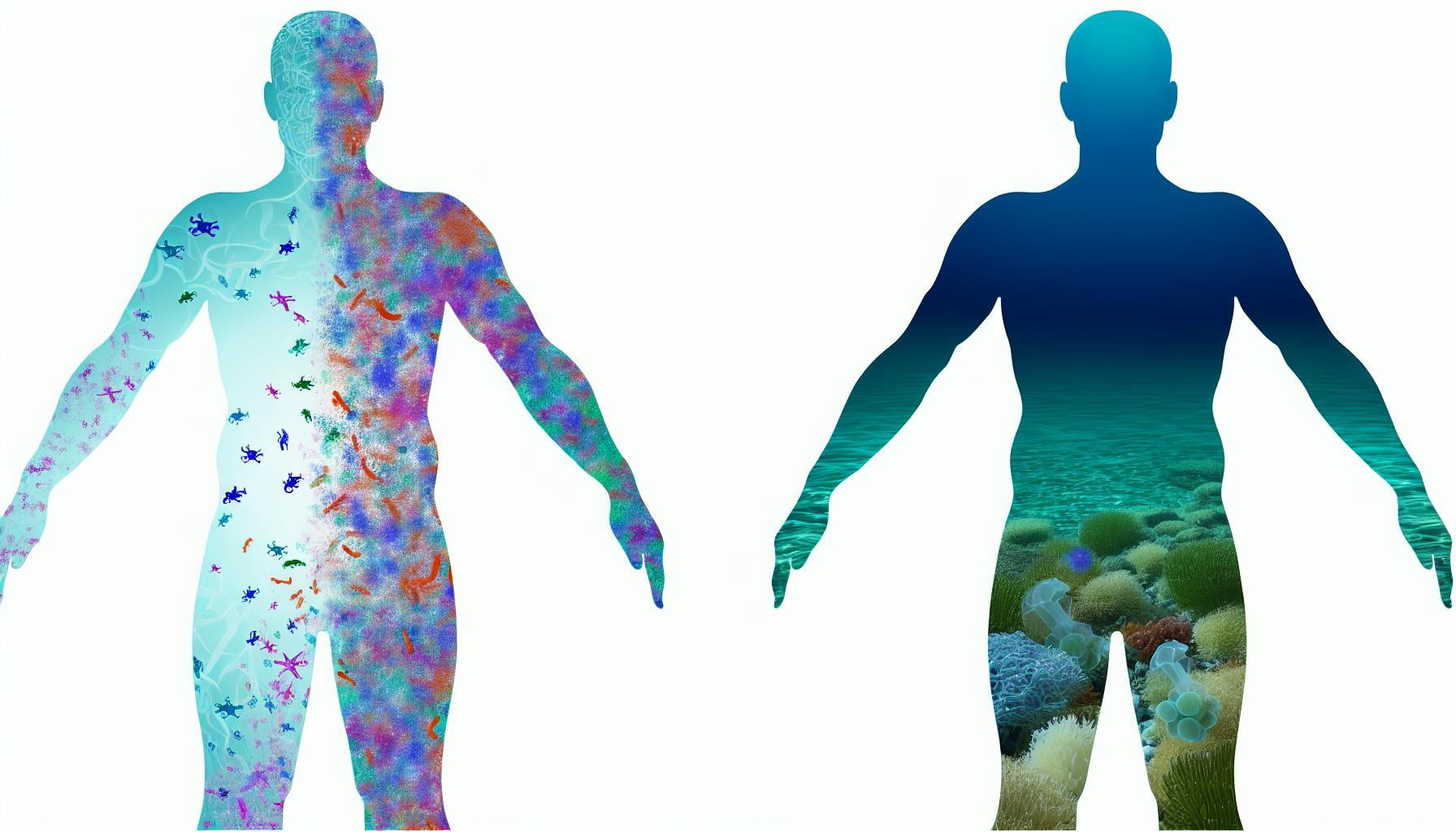Microplastics are tiny plastic particles that can enter our bodies through food and water, potentially harming our health. Plastic food containers like Tupperware are a major source of microplastic pollution as chemicals can leach into the stored food and drinks.
Key Takeaways:
- Microplastics come from larger plastics breaking down and daily activities involving plastics.
- Studies show microplastics can leach into food from plastic containers, especially when heated or as the containers age.
- Ingesting microplastics has been linked to increased inflammation, insulin resistance, type 2 diabetes, heart disease, and potential damage to human systems.
- While Tupperware has removed some concerning chemicals, microplastics can still leach from their containers.
Safer Alternatives:
| Alternative | Benefits |
|---|---|
| Glass containers | Non-porous, durable, won't leach chemicals |
| Stainless steel containers | Inert, corrosion-resistant, easy to clean |
| Silicone containers | Flexible, soft, gentle on food |
What You Can Do:
- Choose alternative containers made of glass, stainless steel, or silicone.
- Avoid heating food in plastic containers.
- Choose products with minimal packaging.
- Recycle plastic containers and dispose of them properly.
- Stay informed and demand sustainable packaging options.
Manufacturers and policymakers also play a crucial role in reducing microplastic pollution by using sustainable materials, offering biodegradable packaging, implementing take-back programs, and enacting regulations on plastic production and use.
Together, we can work towards a future with less microplastic pollution and a protected environment.
Related video from YouTube
Microplastic Pollution from Food Containers
What Are Microplastics?
Microplastics are tiny plastic pieces less than 5 millimeters (about 0.2 inches) in size. They come from larger plastics breaking down and daily activities involving plastics. These tiny particles can enter our bodies when we eat or breathe them in, which may harm our health.
Sources in Food Containers
Plastic food containers, like Tupperware, are a major source of microplastic pollution. These containers are made with chemical additives that can leach into food and drinks. When we store, prepare, and consume food in these containers, we're unknowingly consuming microplastics.
How Microplastics Leach
Microplastics can leach into food and drinks through:
- Heat: When plastic containers are exposed to heat, the chemicals can break down and leach into food.
- Age: As plastic containers get older, they can degrade and release microplastics into food.
- Chemical composition: The type of plastic used in containers affects the rate of microplastic leaching. For example, polyethylene and polypropylene are more prone to leaching than other types of plastic.
Health Risks of Ingestion
Ingesting microplastics has been linked to various health risks, including:
| Health Risk | Description |
|---|---|
| Increased inflammation | Microplastics may cause inflammation in the body. |
| Impaired fasting glucose and insulin resistance | Microplastics may affect glucose and insulin levels. |
| Type 2 diabetes | Microplastics may increase the risk of developing type 2 diabetes. |
| Heart disease | Microplastics may contribute to heart disease. |
| Potential damage to human systems | Microplastics may impair normal metabolism processes and damage various body systems. |
While the exact risks are still being studied, it's important to reduce our exposure to these tiny particles. In the next section, we'll explore the role of Tupperware in microplastic pollution and what we can do to minimize our impact.
Tupperware and Microplastics

About Tupperware
Tupperware is a well-known brand that makes plastic containers for storing food. The company started in 1946 and aimed to create useful products that make storing and preparing food easier.
Concerns Raised
In recent years, some people have raised concerns about the possible health risks of using Tupperware products. Critics argue that chemicals used in Tupperware's plastic containers could leak into food, which may be harmful to human health. Specifically, the use of bisphenol A (BPA) and phthalates in some Tupperware products has caused worry. While Tupperware has tried to remove these chemicals, some critics believe more needs to be done to ensure their products are safe.
Research Findings
Studies have shown that microplastics can leak from plastic containers, including Tupperware products, into food and drinks. For example:
| Study | Findings |
|---|---|
| Journal of Hazardous Materials | Microwaving food in plastic containers can cause microplastics to be released. |
| Environmental Science and Technology | Microplastics were found in tap water and bottled water, showing they can get into the food chain. |
While these studies do not focus only on Tupperware products, they raise concerns about the potential risks of using plastic containers for storing food.
sbb-itb-1dc3f59
Facts vs. Fiction
Scientific Proof
Studies show that microplastics can leak from plastic containers, like Tupperware, into food and drinks. For example:
- Microwaving food in plastic containers can cause microplastics to be released (Journal of Hazardous Materials study).
- Microplastics were found in tap and bottled water, showing they can get into the food chain (Environmental Science and Technology study).
Myths vs. Reality
| Myth | Reality |
|---|---|
| All plastic containers are safe for food storage. | Microplastics can leach from containers, even if they are BPA-free or phthalate-free. |
| Age and wear don't affect microplastic release. | Older containers are more likely to leach microplastics due to degradation over time. |
| Tupperware products are microplastic-free. | While Tupperware has removed BPA and phthalates from some products, microplastics can still leach from their containers. |
| Microplastics are only found in ocean water. | Microplastics have been found in tap water and bottled water. |
| Microplastics are harmless to human health. | Research suggests microplastics may pose health risks. |
Research Limitations
While studies show microplastics can leak from plastic containers, there are still gaps in our understanding:
- Many studies focus on specific types of plastic containers or microplastics.
- More research is needed on the human health impacts of microplastic ingestion and exposure.
Safer Options
To reduce exposure to microplastics from food containers, consider these safer choices and practices:
Alternative Containers
Instead of plastic, try:
- Glass containers: Non-porous, durable, and won't leach chemicals.
- Stainless steel containers: Inert, corrosion-resistant, and easy to clean.
- Silicone containers: Flexible, soft, and gentle on food.
These options can help minimize microplastic contamination in your food and drinks.
Reducing Exposure
To limit microplastic exposure:
- Avoid heating food in plastic containers, as heat can cause microplastics to leach into your food.
- Choose products with minimal packaging to reduce plastic waste.
- Properly dispose of plastic containers to prevent environmental contamination.
- Recycle plastic containers whenever possible to reduce waste.
Following these practices can significantly lower your microplastic footprint.
Manufacturers' Role
Manufacturers can contribute by:
| Action | Description |
|---|---|
| Sustainable materials | Design products using materials that minimize plastic use. |
| Biodegradable/recyclable packaging | Use packaging that can be broken down or recycled. |
| Take-back programs | Implement programs to collect and recycle plastic containers. |
These steps can help reduce the amount of plastic waste in the environment.
Policymakers' Role
Policymakers can help by:
1. Implementing regulations on plastic production and use. 2. Encouraging sustainable packaging practices through incentives and education. 3. Developing effective waste management systems to reduce plastic waste.
Enacting policies that promote sustainability can mitigate microplastic pollution.
Consumers' Role
As consumers, you can make a difference by:
- Making informed choices about the products and packaging you buy.
- Demanding sustainable packaging options from manufacturers.
- Participating in recycling programs and properly disposing of plastic waste.
Conclusion
Microplastic pollution from food containers is a major issue that needs our attention. As consumers, we have the power to make smart choices and ask manufacturers for sustainable packaging options. By switching to alternatives like glass, stainless steel, or silicone containers, reducing exposure to heat and properly disposing of plastic waste, we can lower our microplastic footprint.
It's crucial to stay informed about the risks of microplastic pollution and continue researching and raising awareness. Manufacturers must use sustainable materials, offer biodegradable/recyclable packaging, and implement take-back programs. Policymakers should enact regulations on plastic production and use, encourage sustainable practices, and develop effective waste management systems.
Together, we can work towards a future with less microplastic pollution and a protected environment. Every small change we make in our daily lives can have a significant impact when combined with others' efforts. Switch to safer, sustainable options today and join the movement for a microplastic-free future.
What You Can Do
| Action | Description |
|---|---|
| Choose alternative containers | Use glass, stainless steel, or silicone containers instead of plastic. |
| Reduce exposure | Avoid heating food in plastic containers and choose products with minimal packaging. |
| Proper disposal | Recycle plastic containers whenever possible and dispose of them correctly. |
| Make informed choices | Stay informed about microplastic risks and demand sustainable packaging options. |
| Participate in recycling programs | Recycle plastic waste through available programs in your area. |
Manufacturers' Role
| Action | Description |
|---|---|
| Use sustainable materials | Design products using materials that minimize plastic use. |
| Offer biodegradable/recyclable packaging | Use packaging that can be broken down or recycled. |
| Implement take-back programs | Collect and recycle plastic containers through take-back programs. |
Policymakers' Role
1. Implement regulations on plastic production and use. 2. Encourage sustainable practices through incentives and education. 3. Develop waste management systems to reduce plastic waste.
FAQs
What are the safest plastic food storage containers?
The safest plastic containers for storing food are:
- HDPE (High-Density Polyethylene): Used for milk jugs, grocery bags, and some food storage boxes.
- LDPE (Low-Density Polyethylene): Used for bread bags, produce bags, and some food storage boxes.
- PP (Polypropylene): Used for some food storage containers and reusable containers.
These plastics are less likely to leach chemicals into your food.
To reduce exposure to microplastics from food containers:
| Tip | Description |
|---|---|
| Limit processed foods | These often come in plastic packaging. |
| Choose minimal packaging | Look for products with biodegradable materials. |
| Avoid heating plastic | Heat can cause chemicals to leach into food. |
| Use glass or stainless steel | These materials are safer for food storage. |
| Recycle and dispose properly | Recycle plastic containers when possible and dispose of them correctly. |
Other Tips
- Avoid highly processed foods that often come in plastic packaging.
- Choose products with minimal packaging or those that use biodegradable materials.
- Never heat food in plastic containers, as this can cause chemicals to leach into your food.
- Store food in glass or stainless steel containers whenever possible.
- Recycle plastic containers whenever possible and dispose of them correctly.


